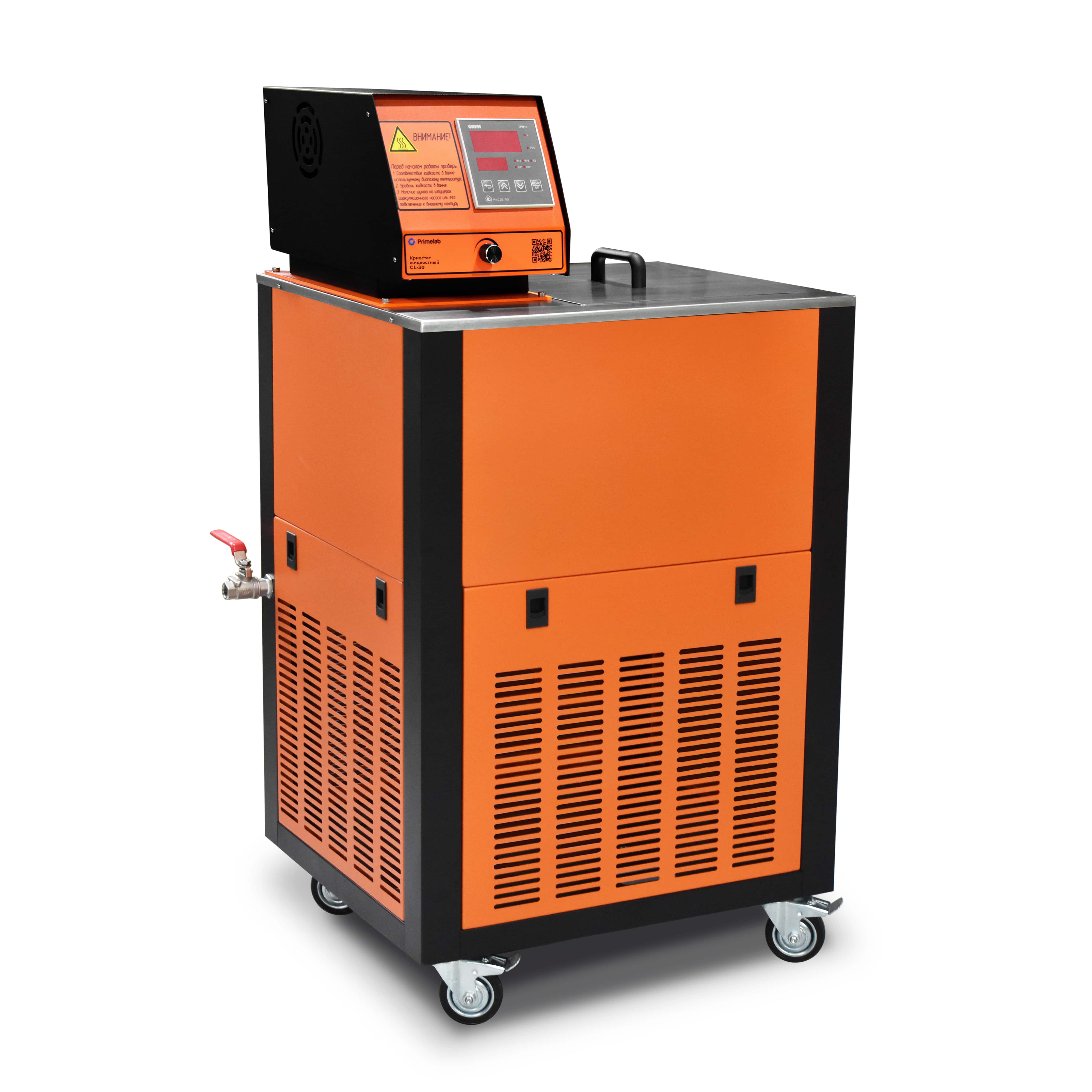Catalog
Search
69 products
View:
- Selected: 0Applying
- Selected: 0Names
- Selected: 0Manufacturer
- Selected: 1Made in
- Selected: 0Additional
View:
69 products
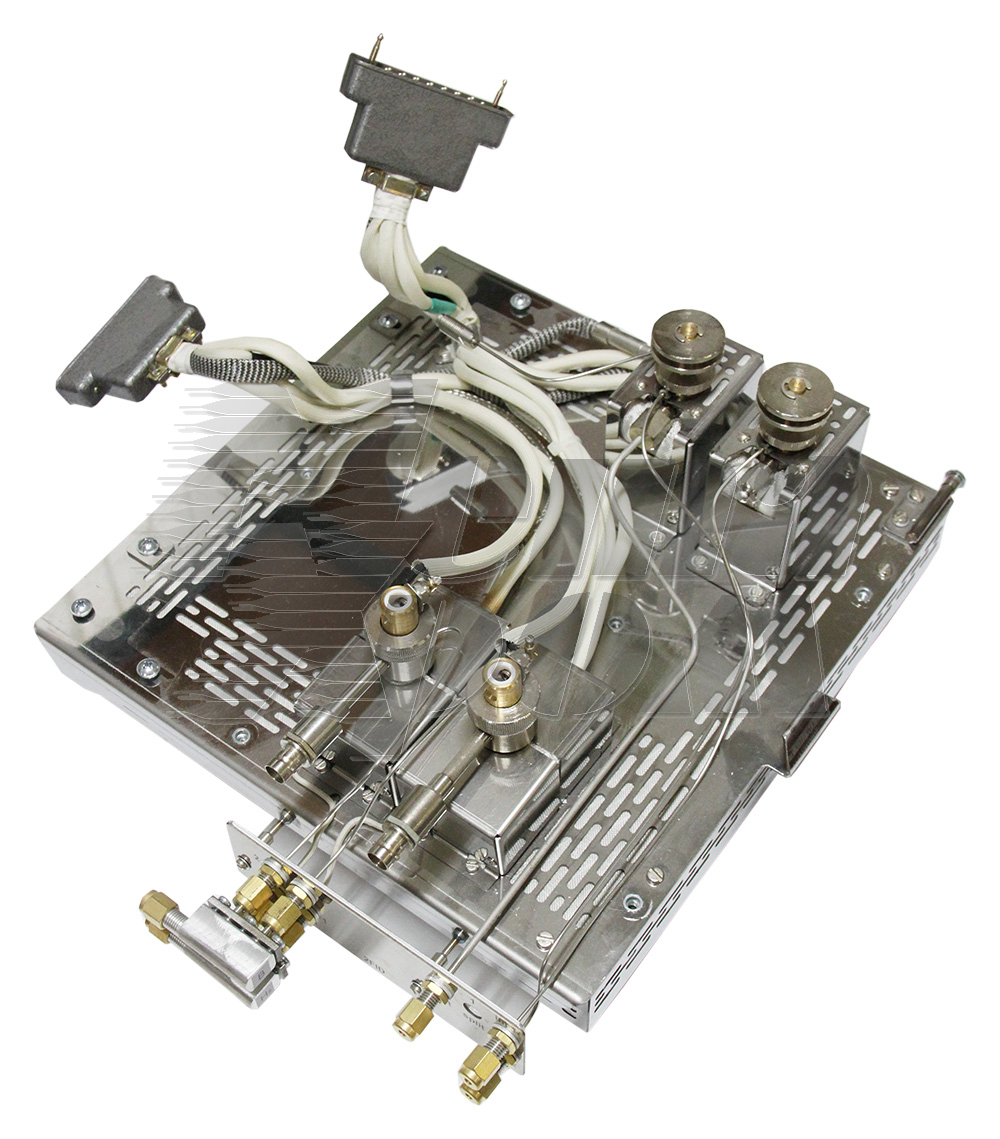
Photoionization (PID)
Partially universal detector. It is used for the analysis of most
organic compounds, including aromatic and aliphatic (except methane) hydrocarbons, heterocyclic compounds, phenols, phthalates, pesticides, amines, ketones, aldehydes, esters, mercaptans. It does not register compounds whose ionization threshold is higher than 10.2 eV (for example, acetonitrile, methanol).
Technical characteristic:
5.0*10`13 g/s for benzene
NPF "META-KHROM"
Yoshkar-Ola
Produced in: Yoshkar-Ola, Mari El
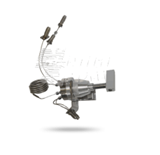
METERING VALVE FOR GAS SAMPLES
The metering valve for the introduction of gas samples is designed for the introduction of gas under excessive pressure into the chromatograph. Cranes differ in the number of moves (4, 6, 8, 10, 12) and have two provisions "Selection" — "Analysis". In addition to dosing, cranes can be used to switch chromatographic columns, elements of gas circuits, etc. The tap can be installed either on the side panel of the chromatograph, or directly into the analytical module instead of, or together with the evaporator of the chromatograph, while it is used as a back-purge tap or for hot sample entry. Additionally, the tap for hot entry can be equipped with heated pipelines.
technical specifications
The dose volume is from 0.25 to 5.0 ml (at the request of the consumer, the dose volume can be increased to 10 ml and reduced to 0.1 ml).
The maximum temperature of the tap is no more than 160 °C.
The pressure in the crane line is not more than 0.48 MPa.
The angle of rotation of the crane handle — depending on the number of strokes.
NPF "META-KHROM"
Yoshkar-Ola
Produced in: Yoshkar-Ola, Mari El
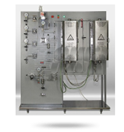
LABORATORY INSTALLATION OF SELECTIVE HYDROGENATION
The bench laboratory unit is designed to test the adsorption properties of silica gels, protective layers and selective hydrogenation catalysts.
Ambient temperature from +10 to +35C;
The relative humidity of the air is not more than 80% at a temperature of 25C;.
Power supply – three- or single-phase AC network with a voltage of 220 V ± 10% with a frequency of 50 Hz.; air 0.4 — 0.8 Mpa.
The average service life of the installation is 5 years.
TECHNICAL CHARACTERISTICS
Operating pressure range, MPa 0÷6
Reactor operating temperature range, 0C 20÷600
Reactor inner diameter, mm 20
Internal length of the reactor, mm 690
A thermocouple pocket with a movable filter and a support grid fixed on it to regulate the volume of the tested catalyst.
Length of the isothermal zone, mm 300
The type of furnace is Casement
Number of thermostatically controlled independent zones 4
The power consumed by each of the four independent thermostatic zones, W ≤ 400
The discreteness of the temperature setting, 0C 0.1
Flow range C2 H4, l/min 0,02÷1,7
Flow range C3 H6, l/min 0,02÷1,7
Flow range H2, l/min 0÷0.02
Flow range N2, ml/min 0.02÷1.7
Actuation pressure of mechanical safety valves, 6,8 MPa
Supply voltage 220V 50Hz
Power consumption not more than, kW 5
The discreteness of the temperatures and flow rates displayed on the displays is 0.01
Installation weight, kg 230
Overall dimensions of the installation, mm 1680x1480x580
Length of supply gas pipelines, m 20
NPF "META-KHROM"
Yoshkar-Ola
Produced in: Yoshkar-Ola, Mari El
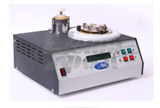
EQUILIBRIUM STEAM DISPENSER DRP-10(DRP-13)
The equilibrium steam dispenser "DRP-10 (DRP-13)" is designed for the introduction of volatile components from matrices into the chromatograph, the introduction of which into the chromatograph is impossible or undesirable. Examples of such matrices are natural, drinking and waste water, soil, biological fluids, food and beverages, various polymers, building materials, pharmaceutical products, etc. The use of DRP-10 (DRP-13) makes it possible to avoid contamination of the evaporator, column and chromatograph detector with non-volatile or non-volatile substances, to avoid the consumption of solvent required for extraction, to increase the reproducibility of analyses.
Technical specifications
The temperature of the thermostat of containers with a breakdown is from ambient temperature to 150 °C.
The error of maintaining the temperature is not more than 0.1 ° C.
The volume of the container with the sample is 20 ml, it is possible to use vials from 6 to 40 ml.
The number of simultaneously thermostatically controlled containers is 4.
The dosed volume of the equilibrium vapor is up to 2 ml.
The temperature of the syringe is from ambient temperature to 150 °C.
The gas consumption for purging is from 5 to 300 ml/min.
Electric power supply from the AC network with voltage (220index) V, frequency (50 ± 1) Hz.
Overall dimensions (width × depth × height) — 350×270×170 mm.
Power consumption — no more than 360 VA.
Weight — no more than 6.5 kg.
NPF "META-KHROM"
Yoshkar-Ola
Produced in: Yoshkar-Ola, Mari El

GENERATOR OF STANDARD CHROMATOGRAMS (GSH-3)
The GSH-3 hardware and software complex is designed for verification of analog and digital measuring channels of the chromatograph and analog-to-digital converters (ADCs) intended for automation of old chromatographs. The device can be used in various sectors of the national economy, in factory and research laboratories.
technical specifications
The resolution and sampling rate of 1 DAC is 20 bits 10 Hz.
The resolution and sampling rate of 2 DACs is 16 bits 20 Hz.
The amount of ROM memory is 512 KB.
The voltage output range (1 output) is from 0 to 5V.
The current output signal range is from 1×10-14 to 1×10-7 A (2 outputs in the range of positive and negative voltages).
The relative deviation of the average steady—state value of the current or voltage of the output channel from the set value is not more than 2%.
The linearity error ±1 LSB (the least significant bit) is ± 4×10-7 V.
Power consumption (without a personal computer), no more than — 10 VA.
Overall dimensions (width × depth × height), not more than — 230×220 × 75 mm.
Weight, not more than 1.4 kg.
NPF "META-KHROM"
Yoshkar-Ola
Produced in: Yoshkar-Ola, Mari El
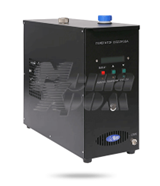
HYDROGEN GENERATOR (HW) 7, 12, 16, 25 LITERS
The hydrogen generator is equipped with its own microprocessor, with which you can control the operating modes of the device. It is microprocessor control that determines the autonomy of the device. Moreover, this allows you to control the basic and technical parameters of the device (pressure, flow rate, level of water poured into the tank, tightness of gas lines, electrolyzer current). For the manufacture of gas lines, exclusively inert materials are used.
Technical specifications:
The device is equipped with a four-button keyboard, which is used to set parameters and control. The generator can operate in continuous mode for a long time. For refueling, especially pure or double-distilled water is used, and refueling can be done without turning off the device, on the go. Their advantage is that they significantly reduce, or even completely eliminate, the use of bottled gases to power chromatographs and gas analyzers. For nutrition, mainly double-distilled water is used, the quality of which must be no lower than grade B water according to OST 11.029.003–80, and the electrical resistivity must be no less than 1 Mohm x cm.
The devices operate from a single-phase AC electrical network with voltage from 187 to 242 W, frequency (50±1) Hz. Maximum safety of devices is achieved due to the absence of such a supply of substance in them, which could fill a chromatograph or laboratory in a short period of time. The performance of the device eliminates the occurrence of explosive situations, so the generator is considered safe to use.
The device is equipped with a four-button keyboard, which is used to set parameters and control. The generator can operate in continuous mode for a long time. For refueling, especially pure or double-distilled water is used, and refueling can be done without turning off the device, on the go. Their advantage is that they significantly reduce, or even completely eliminate, the use of bottled gases to power chromatographs and gas analyzers. For nutrition, mainly double-distilled water is used, the quality of which must be no lower than grade B water according to OST 11.029.003–80, and the electrical resistivity must be no less than 1 Mohm x cm.
The devices operate from a single-phase AC electrical network with voltage from 187 to 242 W, frequency (50±1) Hz. Maximum safety of devices is achieved due to the absence of such a supply of substance in them, which could fill a chromatograph or laboratory in a short period of time. The performance of the device eliminates the occurrence of explosive situations, so the generator is considered safe to use.
NPF "META-KHROM"
Yoshkar-Ola
Produced in: Yoshkar-Ola, Mari El

LABORATORY CATALYTIC PLANTS FOR PETROCHEMICALS
Catalytic reforming is used to produce high-octane components of automobile gasoline, flavored concentrate for the production of individual aromatic hydrocarbons, as well as technical water. Isomerization of paraffin hydrocarbons is used to increase the octane number of C5 - C6 oil fractions by converting paraffins of normal structure into their isomers having a higher octane number.oroda.
Hydrotreating of distillates is used to improve the quality and stability of light distillates, raw materials of catalytic cracking, as a result of the use of reactions of destructive hydrogenation of organosulfur compounds and hydrogenation of unsaturated hydrocarbons.
Catalytic cracking is used to obtain additional amounts of light petroleum products, namely high-octane gasoline and diesel fuel, by decomposition of heavy oil fractions in the presence of a catalyst.
Alkylation of isobutane with olefins is used to produce gasoline fractions with high stability and detonation resistance using the reaction of interaction of isobutane with olefins in the presence of a catalyst.
Polymerization (oligomerization) of olefins is used to produce low molecular weight polymers (oligomers) of propylene and butylene used as motor fuel or raw materials for petrochemical synthesis.
Hydrocracking is used to obtain an additional amount of light petroleum products by catalytic decomposition of heavy raw materials in the presence of hydrogen.
Thermal cracking and Visbreaking is used to obtain in the mode of thermal cracking – additional amounts of light petroleum products by thermal decomposition of residues from oil distillation, in the mode of visbreaking – improving the quality of boiler fuel
Coking is used to produce petroleum coke and an additional amount of light petroleum products from heavy residues. The raw materials are tar, thermal cracking residue, heavy gas oil. The products are, for example, petroleum coke.
NPF "META-KHROM"
Yoshkar-Ola
Produced in: Yoshkar-Ola, Mari El
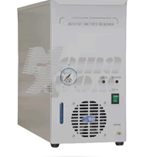
AIR GENERATOR
In addition to air compressors of the type "KOV-4", a pure air generator of the type "GCHV" is produced. Our equipment undergoes thorough quality control, which is confirmed by certificates of conformity.
The device is used to provide clean air supply to gas analyzers and flame ionization detectors of chromatographs.
Technical specifications:
Air capacity reduced to normal conditions, l/min, not less than 2.0
Outlet air pressure, 2.5 atm
Outlet pressure stability, no more than 0.05 atm
Output concentration of hydrocarbons, ppm, not more than 0.1
Concentration of water vapor at 200C and 100kPa, ppm, no more than 10
The value of the power consumption, not more than 200 VA
Dimensions (width×depth×height), mm 210×440×360
Weight, not more than, kg 11
NPF "META-KHROM"
Yoshkar-Ola
Produced in: Yoshkar-Ola, Mari El
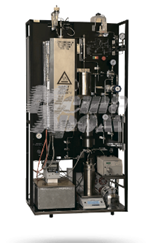
LABORATORY INSTALLATION FOR MODELING THE PROCESS OF THERMAL CONTACT CRACKING. MKUB.413224.029
Laboratory installation for modeling the process of thermal contact cracking (TCC) of heavy oil residues (TNO) (heavy oil fuel oil, tar and semi-tar, asphalt of the process of de-asphalting of high-viscosity oils, cracking residue or pitch, heavy gas oil, natural bitumen, etc.) with a movable solid coolant.
technical specifications
Operating pressure range, MPa 0÷4
Reactor operating temperature range, 0C 50÷800
Reactor inner diameter, mm, 31
Reactor length, mm, 875
Number of thermostatically controlled independent zones 4
Length of each independent isothermal zone of the furnace, mm 200
The length of the full isothermal zone of the furnace, mm 800
Thermocouple Pocket Availability
The type of furnace is Casement
The power consumed by each independent thermostatically controlled zone of the furnace, W 720
Power consumed by all four zones of the furnace, W 2880
The discreteness of the temperature setting, 0C 1
The flow range of the liquid pump, ml/min 0.1-10
The maximum pressure of the high-pressure liquid pump, not less than 20 MPa
Flow range N2, l/min 0÷20
Pressure in the low pressure lines N2 and air, MPa ≤0.6
Operating temperature range of the evaporator-mixer of raw materials, sup>0C 50÷500
Actuation pressure of mechanical safety valves, MPa 3
Maximum pressure in the raw material container, 0.1 MPa
Supply voltage 230-240V 60Hz
The power consumption of the installation is not more than 3.5 kW
The discreteness of the temperatures and flow rates displayed on the displays is 0.1
Installation weight without cabinet, kg 100
Overall dimensions of the installation, mm 1900x865x550
Overall dimensions of the cabinet, mm 2000x880x800
The technical characteristics of the purchased units used in the installation are given in the technical documentation for these units supplied with the installation
The length of the supply pipelines, m 10
The coolant of the refrigerator "tosol"
NPF "META-KHROM"
Yoshkar-Ola
Produced in: Yoshkar-Ola, Mari El
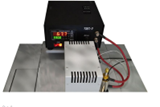
THERMAL DESORBER TDS-3
The TDS-3 includes a heating column with a sorption tube, which is installed on the evaporator of the chromatograph and a control unit located on a special bracket on the right side panel of the chromatograph
Technical characteristics of TDS-3
Desorption temperature (column heating), 0C to 400
Heating speed, 0C/min at least 500
The cooling time when moving to a cold zone is no more than 10 seconds.
Cooling time from 300 0C to 50 0C, min. no more than 10
Continuous operation mode
Power consumption, W not more than 250
Dimensions of the sorption tube, (Ø, length), mm.
Material glass, stainless steel 5/110, 5/114, 6/115, 6.35/89
Electric power supply from 187 to 242 V, 50 Hz.
The display of the measured temperature and the setting of the temperature on the display is
The discreteness of setting the desorption temperature, 0C 0.1
NPF "META-KHROM"
Yoshkar-Ola
Produced in: Yoshkar-Ola, Mari El
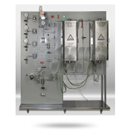
AUTOMATIC SIX-CHANNEL INSTALLATION
The unit is designed for testing fresh catalysts, deactivated in laboratory conditions and equilibrium (used in industry). The volume of the loaded catalyst is from 5 to 12 grams, the loading of raw materials (vacuum gas oil) is 1-3 grams. Conradson coking capacity should not exceed 10%. After cracking, the degree of coking of the catalyst is determined directly at the installation. Liquid and gaseous cracking products are analyzed by three gas chromatographs with automatic dispensers, which makes it possible to determine the degree of conversion and selectivity of the catalyst.
NPF "META-KHROM"
Yoshkar-Ola
Produced in: Yoshkar-Ola, Mari El
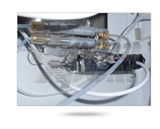
SPEAKER SWITCHING DEVICES
To switch the nozzle columns, conventional taps (reverse purge, 6-, 8- and 10-port) are used, which, however, are not suitable for switching capillary columns. An alternative way to switch capillary columns is to change the flows in the capillary columns, which is produced by the so-called "Dins switches" (PD).
TECHNICAL CHARACTERISTICS of PD
The switching time setting range is from 0.1 to 999 min.
Switching time is 0.1 s.
The dead volume of the crane is less than 1 µl.
The temperature of the tap is no more than 350 °C.
The pressure in the crane line is not more than 0.4 MPa.
Electric power supply — 5 V.
NPF "META-KHROM"
Yoshkar-Ola
Produced in: Yoshkar-Ola, Mari El
